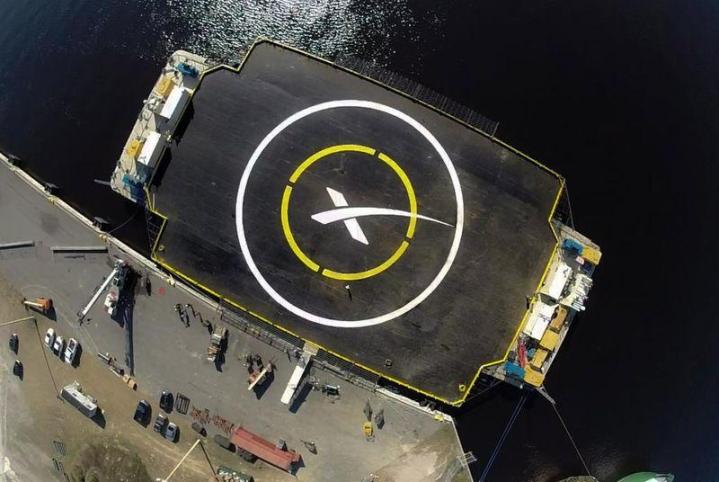
A few months back, Elon Musk announced SpaceX’s latest crazy plan: Instead of landing its Falcon 9 rockets on solid ground, the company wants to land them at sea, on top of a massive floating platform. This Friday will be the company’s first shot at doing so — and if everything goes well, the landing will be a major milestone for space travel. Here’s why:
One massive problem with current space travel methods is that the vast majority of rockets and other spacecraft aren’t designed to be reusable. Millions of dollars go into constructing and launching them into orbit, yet most are left to float through space or crash back down to Earth rather than being recovered. This is part of why space travel remains so expensive.
SpaceX is on a mission to change this. For the past few years, the company has been working to develop spacecraft that can take off, deliver payloads to orbit, and then return safely back to the surface of the planet — at which point the rockets can be repaired and reused for subsequent missions, saving tens of millions or more.
The company’s Falcon 9 rocket is the fruit of all this labor. Using small boosters and a set of newly-developed “X-wings” located near its nose, the rocket can stabilize itself as it re-enters Earth’s atmosphere, keeping its main thrusters pointed downward. It can then fire these big thrusters as it falls back to the ground, and use them to regulate speed so that it can gently touch down when it reaches the surface.

Conceptually, this landing method is fairly straightforward — but of course, actually making it happen is extremely difficult. Over the past few years, SpaceX has attempted to pull it off on a number of different occasions, but has thus far failed to fully recover a rocket.
The company actually achieved soft ocean landings for two missions in 2014, but even after coming to a controlled vertical stop, the rockets were irreversibly damaged when they toppled sideways into the sea. SpaceX remains stalwart, however. Since landing in the water won’t work, they’ve turned to something else.
To save the rockets, SpaceX needs a safe place to land, somewhere level to ensure they won’t fall into the ocean. To that end, the company has built a giant autonomous drone ship that can keep itself stable even in heavy seas. This landing pad is roughly the size of a football field, and it uses thrusters repurposed from ocean-going oil rigs to hold its position within 3 meters regardless of environmental conditions.
Autonomous spaceport drone ship. Thrusters repurposed from deep sea oil rigs hold position within 3m even in a storm. pic.twitter.com/wJFOnGdt9w
— Elon Musk (@elonmusk) November 22, 2014
Landing a rocket on this platform will be like “trying to balance a rubber broomstick on your hand in the middle of a wind storm,” SpaceX said in a statement released Tuesday. It’s going to be exteremly tricky, so even if everything goes off without a hitch, the company still isn’t sure it’ll work.
“It’s probably not more than a 50 percent chance or less of landing it on the platform,” CEO Elon Musk said, at the recent MIT AeroAstro Centennial Symposium. “But there’s at least a dozen launches that will occur over the next 12 months, and I think it’s quite likely, probably 80 to 90 percent likely, that one of those flights will be able to land and re-fly. So I think we’re quite close.”
Liftoff of the Falcon 9 rocket and Dragon spacecraft from Cape Canaveral Air Force Station Space Launch Complex 40 is scheduled for 1:22 p.m. EST. We’ll keep you posted on how it goes, so be sure to check back for updates.
Editors' Recommendations
- SpaceX slow-motion video shows powerful Raptor rocket engine shutting down
- Watch SpaceX blast its megarocket engines in spectacular test
- Watch SpaceX fire Starship’s Raptor engines ahead of 4th test flight
- Take a high-speed ride on SpaceX’s emergency escape chute
- SpaceX shares awesome rocket imagery from Starship flight




